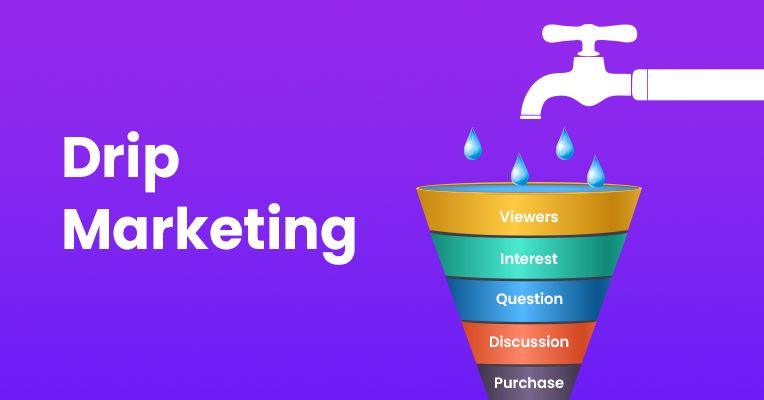Automated Drip Campaigns/ Introduction to Automated Drip Campaigns / Drip Campaign Objectives/ Types of Drip Campaigns / Planning and Strategy / Content Creation and Sequencing / Personalization and Segmentation / Automation Tools and Platforms / A/B Testing and Optimization / Monitoring and Managing Campaigns / Conversion and Goal Tracking / Timing and Frequency / Data Privacy and Compliance / Multichannel Integration / Behavior-Triggered Drip Campaigns / Scalability and Segmentation / AI and Predictive Analytics / Drip Campaign Case Studies / Identifying Inactive Subscribers or Customers / Re-engagement Content Strategies / Win-back Campaign Metrics / E-commerce Drip Campaigns / SaaS and Software Onboarding / B2B Lead Nurturing / Cross-Cultural Considerations / Language Segmentation / Key Performance Indicators (KPIs) / Data Analytics and Insights / ROI Calculation / Deliverability and Spam Issues / Message Fatigue and Unsubscribes / Data Management and Integration Challenges
Configuring Automated Drip Campaigns in Email Marketing Software
- Selecting the Right Tool: Choose an email marketing software that aligns with your campaign goals and requirements. Popular platforms like Mailchimp, HubSpot, or ActiveCampaign offer robust automation features suitable for drip campaigns.
2. Campaign Workflow Design: Map out the sequence of emails and actions for your drip campaign. Set triggers and define the intervals between each email to create a logical and engaging flow. Consider the customer journey and segment-specific content accordingly.
3. Content Creation and Personalization: Craft compelling content for each email in the series. Tailor messages based on recipient behavior, preferences, or stage in the customer lifecycle. Utilize dynamic content and personalization tokens to increase relevance.
4. Automation Settings: Configure automation settings within the chosen software. Set up triggers based on specific actions or events, such as subscribing to a newsletter, downloading content, or abandoning a cart, to automate the delivery of targeted messages.
Integrating Drip Campaigns with Customer Databases
- Data Integration: Ensure seamless integration between your email marketing software and customer databases or CRM systems. This integration allows for a unified view of customer data, enabling better segmentation and personalization.
2. Data Mapping and Segmentation: Map relevant customer data fields from your database to personalize drip campaign content. Segment your audience based on demographics, behavior, or past interactions to deliver more targeted messaging.
3. Automation Rules and Triggers: Set up automation rules within the integrated systems to trigger drip campaigns based on specific customer actions or attributes. This ensures timely and relevant communication aligned with customer behavior.
4. Testing and Validation: Before launching the drip campaigns, thoroughly test the integration between systems to ensure accurate data syncing and seamless automation. Validate the setup by sending test emails and tracking the flow within the system.
Setting up drip campaigns involves a strategic blend of campaign design, content creation, and seamless integration with customer databases. The synergy between email marketing software and customer data systems is critical for delivering personalized, timely, and engaging content to your audience.
In conclusion, the successful setup of automated drip campaigns hinges on meticulous planning, thoughtful content creation, and seamless integration with customer databases. By leveraging the capabilities of email marketing software and integrating them with customer data systems, businesses can create powerful drip campaigns that nurture leads, drive conversions, and foster stronger relationships with their audience.
Automated Drip Campaigns/ Introduction to Automated Drip Campaigns / Drip Campaign Objectives/ Types of Drip Campaigns / Planning and Strategy / Content Creation and Sequencing / Personalization and Segmentation / Automation Tools and Platforms / A/B Testing and Optimization / Monitoring and Managing Campaigns / Conversion and Goal Tracking / Timing and Frequency / Data Privacy and Compliance / Multichannel Integration / Behavior-Triggered Drip Campaigns / Scalability and Segmentation / AI and Predictive Analytics / Drip Campaign Case Studies / Identifying Inactive Subscribers or Customers / Re-engagement Content Strategies / Win-back Campaign Metrics / E-commerce Drip Campaigns / SaaS and Software Onboarding / B2B Lead Nurturing / Cross-Cultural Considerations / Language Segmentation / Key Performance Indicators (KPIs) / Data Analytics and Insights / ROI Calculation / Deliverability and Spam Issues / Message Fatigue and Unsubscribes / Data Management and Integration Challenges
